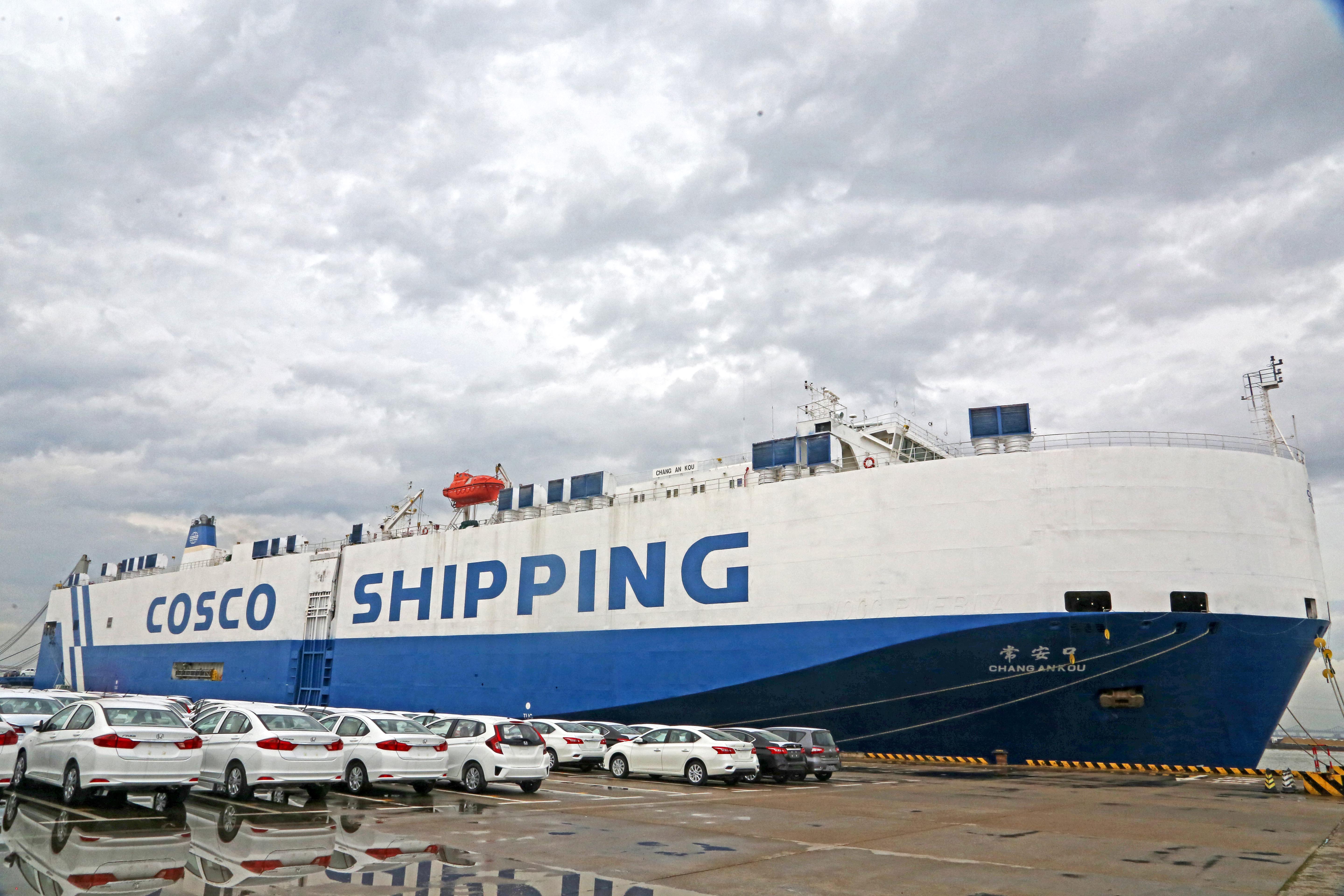Domestic Trade Consignment: Seeking Freshmen in Trek

- Date: Jul 19, 2018
- Comments: no comments
- Categories: News
Recently, Yangpu Zhongliang Shipping Co., Ltd. announced that due to the continued sluggish domestic shipping market, intensified competition in the industry, and increased production costs, the company suspended all routes. The incident has aroused widespread concern in the industry. What are the problems in the current domestic trade collection market? What kind of market environment does the domestic trade shipowner need in the competition? “China Communications News” interviewed domestic trade consignment enterprises, China Shipowners Association and industry experts, asking them to analyze the development of the domestic trade container market.
– Editor
Domestic trade container
Save a lot of room for development
Since the formation of China’s domestic trade container shipping market in 1997, in the context of rapid economic growth, market capacity, industry scale, and number of employees have developed rapidly. A number of routes have been formed and the service network is comprehensive. Shipping companies, such as Shanghai Pan Asia, Antong, Zhonggu, Sinotrans, Xinfeng, Hede Shipping, Ningbo Ocean.
Zhang Shouguo, executive vice president of China Shipowners Association, said that the current domestic economic policy guidance, industrial structure and other factors have a certain degree of positive for the domestic trade container freight market.
“The overall trend of China’s economy is L-shaped. In the next few years, the risk-adjusting, squeeze-bubble, mobilization, and stable efficiency policies will be adjusted. The economic growth rate will remain around 6.3% by 2020. On the other hand, The state attaches great importance to environmental protection, the construction of ‘One Belt and One Road’, the gradual advancement of highway reform, the reduction of bulk transportation of domestic roads and waterways, and the process of containerization of coastal bulk cargoes will gradually accelerate.” Zhang Shouguo said.
In China’s coastal areas, the containerization rate of domestic trade goods is 50%, and the containerization rate of foreign trade goods is 80% to 90%. “The ratio of containerization rate of domestic trade goods to containerization rate of foreign trade goods is 1:2, while in the United States, the ratio is 3:1. There is still much room for development of domestic trade containers.” Zhang Shouguo said, “Premier Li Keqiang It is proposed that comprehensive measures should be taken to increase the proportion of railway freight transport for bulk cargo and long-distance transport, especially to open the ‘last mile’ of sea-rail combined transport, and significantly increase the proportion of container-sea combined transport. The Ministry of Transport also proposed a three-year target for concentration. By 2020, the railway will increase by 1.1 billion tons (up 30% from this year) and the waterway freight volume will increase by 500 million tons (up 7.5% from this year). In the next few years, the potential of the domestic container market will remain huge. Market-based enterprises still have a large room for development.”
Low-cost competition
disturb the market
The good development prospects of the domestic trade container market are in stark contrast to the status of domestic trade shipping.
After years of rapid development of scale, the shipping market has entered a period of stable development in recent years. However, in order to increase market share, some shipping companies in the industry have stabilized the status of the industry, pursued the scale of capacity, and expanded the capacity too quickly, resulting in oversupply of market capacity. This situation is more serious during the period of 2016-2018. According to statistics, the overall capacity of the domestic trade container market has increased from the total load capacity of 6.6 million tons in 2016 to 10.5 million tons, an increase of about 60%.
Under the situation of overcapacity in the market, the low-price competition of shipping companies is becoming more and more common, and the average freight rate in the market has been sluggish for a long time and fluctuates frequently. The competition mode of domestic trade and distribution is pure low-price competition. Among them, there is a foresight of the development of foreign trade collection. Fifteen years ago, the freight rate of the Shanghai-Japan route was competitively negative. In June 2018, the Pan-Asian Domestic Container Freight Index fell to 865 points, lower than the lowest level in 2016; in 2017, the freight rate fluctuated four times in 2015. In the domestic trade container market, competition has become the norm in the industry. Therefore, when the market has a long period of off-season, there will often be a situation in which the shipping operators have low operating efficiency and even poor operation, and there is a cessation of operation.
“In addition to the low-price competition in the domestic trade collection market, the domestic trade consignment practitioners themselves have many problems.” Xie Wei, a researcher at the Institute of Water Transport Science and Technology of the Ministry of Transport, said: “In the early days of the domestic freight forwarding industry, many people were a single fax machine. One phone set up an agent ‘company’, the quality of the practitioners is uneven, many people are purely laymen, cross-border operations.” They learned and followed some customs and operating modes of the foreign trade agency industry. With the continuous development of domestic trade shipping, in order to seize the market share and continue to lower the standard requirements, in order to meet the needs of customers, the operation of the domestic trade freight forwarding industry is chaotic. “Some of the domestic freight collection freight forwarding utilization information asymmetry, selective deception of the cargo owners and shipping companies, which also hinders the healthy development of the industry at a certain level.” Xie Wei said.
Shipping vision from the same competition
Transfer to focused customers
The sustained and healthy development of the domestic trade container market is inseparable from the self-development of domestic trade transport enterprises. Zhonggu Shipping Enterprise practitioners said: “As a shipping company, we will get rid of the inherent thinking of pure market competition, and think about the industry self-discipline, standardized operation, service improvement, value creation, etc., and create the blue ocean of the domestic trade container supply market. In the new era of shipping companies, there is no way out of irrational low-price competition. We will try our best to find a path in the supply-side structural reform, and through technology innovation and model innovation, we will launch a completely different supply from the past, in terms of timeliness, flexibility, Personalized, value-added services, cross-border collaboration and other areas continue to explore.”
For how the domestic trade container enterprises achieve self-renewal, Xie Wei believes that it is necessary to build core values and overcome supply aging with innovation. “The core value is the improvement from the spiritual aspect. The behaviors of ports, freight forwarders, practitioners, and business owners will change. The positive energy of the industry can be promoted, and the industry can form synergies to promote the formation of a healthy market environment.” The family members of the trade container enterprises must move their vision and pattern from the same competitors and focus their attention on the customers. There must be a lot of customer needs in the new era that have not been met. It depends on whether the family members have “sense” and then “know” and find a new way out for the company.
“The operators of domestic trade container enterprises must strictly abide by the regulations of domestic trade container packing and weight limit, avoid overweight and product name reporting, and standardize their operations.” Zhang Shouguo said, “At the same time, it is necessary to promote the development of sea-rail combined transport and reorganization, and expand Containerization of land cargo and coastal bulk cargo.” Today, inland coal cargo and coastal coiled steel bulk cargoes have shown rapid containerization under the national environmental protection policy.
In addition, domestic trade container enterprises can provide logistics convenience to cargo owners through the construction and upgrading of their own service capabilities. In addition to traditional domestic trade container sources, they will increase non-traditional domestic trade container high-value goods such as “automobile goods” and “white goods”. Develop a new source market in proportion to the source of supply.
Expectation of admission system
Standardize industry development
There are some unreasonable phenomena in the domestic trade container market. In order to regulate the behavior of the industry, protect the interests of all parties, ports and airlines, and promote the long-term healthy development of the domestic trade container market, the government departments need to strengthen guidance.
The China Shipowners Association appealed to the phenomenon that foreign old ships and domestic bulk carriers existing in the domestic trade container market have been slightly transformed into the domestic market. It is hoped that the government departments will strengthen guidance to the industry and formulate market access principles. In terms of access and capacity access, the shipping enterprises are regulated, and the damage of non-compliant enterprises to the industry is reduced from the source. In addition, there are still domestic phenomenon that port enterprises operate shipping enterprises at the same time. In this regard, I hope that the government departments will strengthen management and create a more level playing field for the industry. Regarding the phenomenon of overweight and product name of domestic trade containers, it is hoped that the government departments will guide and strengthen the enforcement and punishment of domestic trade container weight limit, packing specifications and cargo declaration, and regulate the industry environment.
At the same time, the competent department of industry should guide and supervise the scientific research institutions in the industry to release the dynamic information and annual reports of relevant markets, so that practitioners can obtain information on market supply and demand, and avoid blindly increasing capacity. “The development of the 2017 waterway transportation market and the 2018 outlook released by the Water Transport Bureau of the Ministry of Transport in May this year is a good start for government information disclosure, which is conducive to guiding the market trend and everyone’s investment impulses,” said Zhang Shouguo.
Xie Wei said: “Industry associations should do more research on the development of the industry, and make more reasonable suggestions. Formulate the normative standards for the development of relevant industries, and report on the condemnation notification or punishment of vicious competition to disrupt the market, and build a common protection system for shipping enterprises.”
As participants in the domestic trade collection market, changes are also needed.
“Domestic port enterprises in China need to improve port operation efficiency, create favorable conditions for practitioners to improve logistics level and reduce logistics costs. Various practitioners in the domestic trade container market, including cargo owners, freight forwarders, trailers, ports, shipping companies, etc., improve industry self-discipline The parties have joined forces to strictly implement industry policies and regulations to jointly promote the better development of the domestic trade collection market.” Xie Wei said.







No Comments Yet.